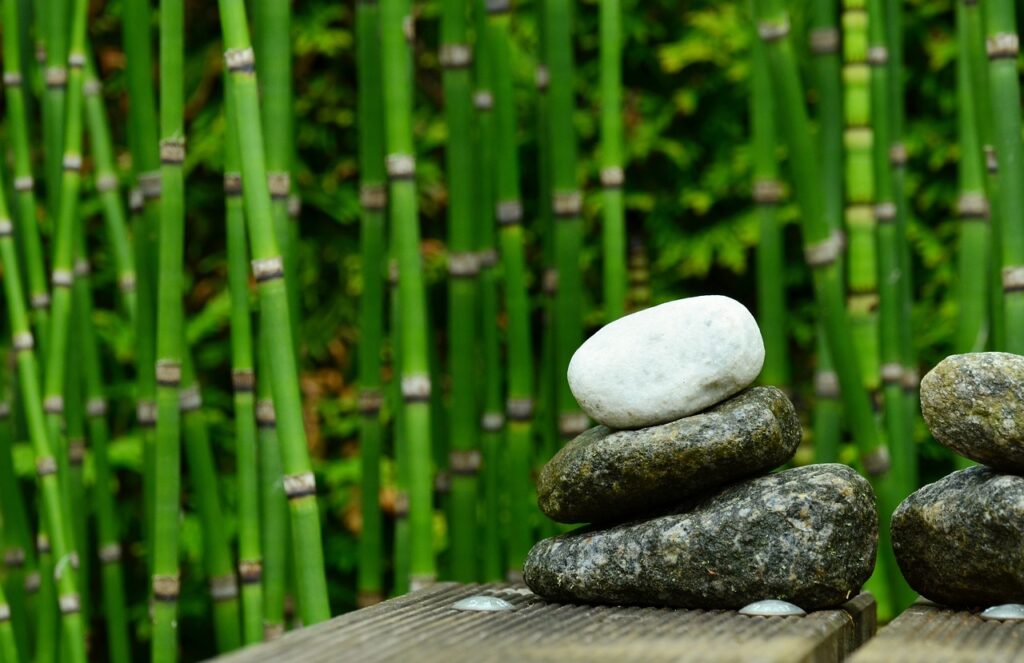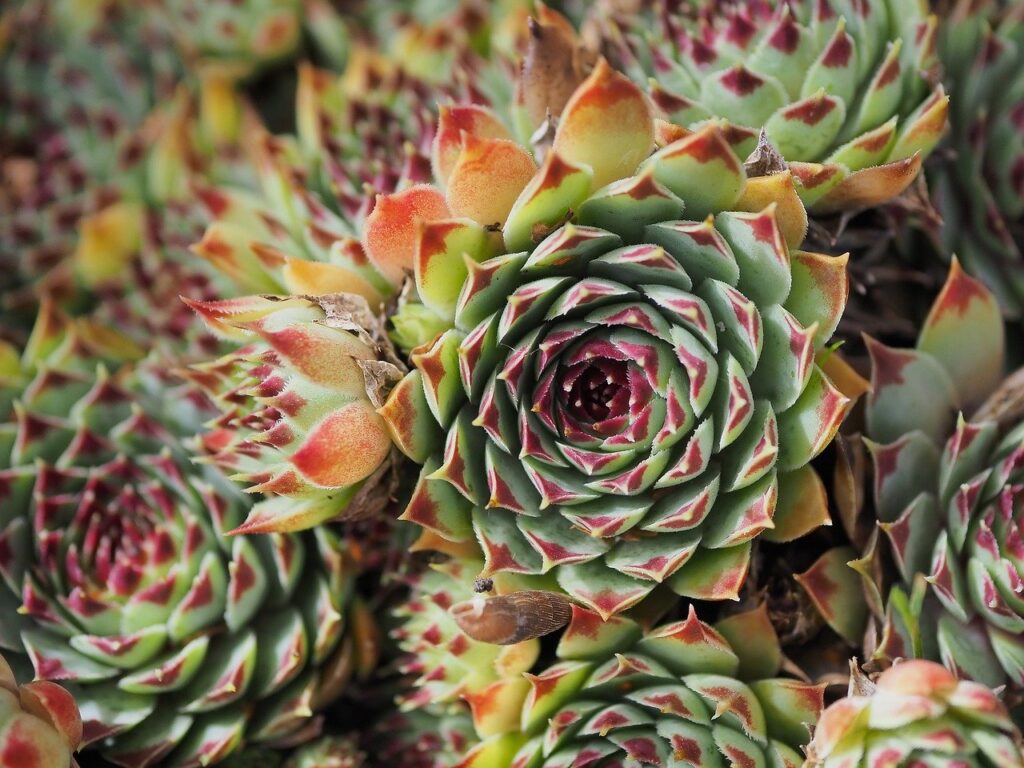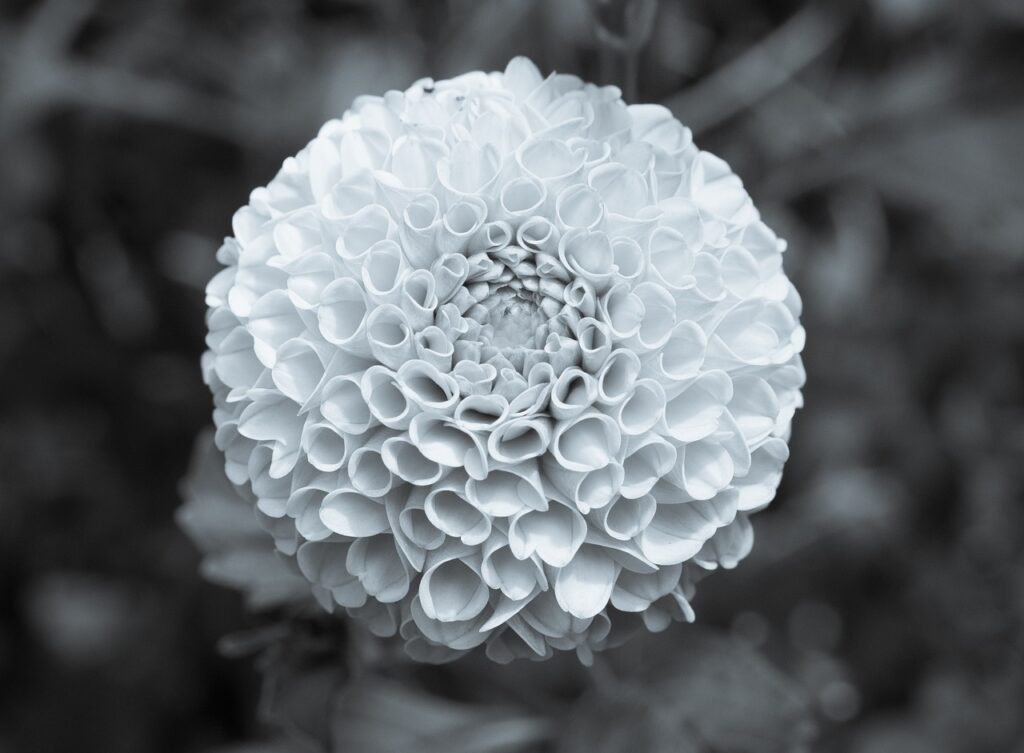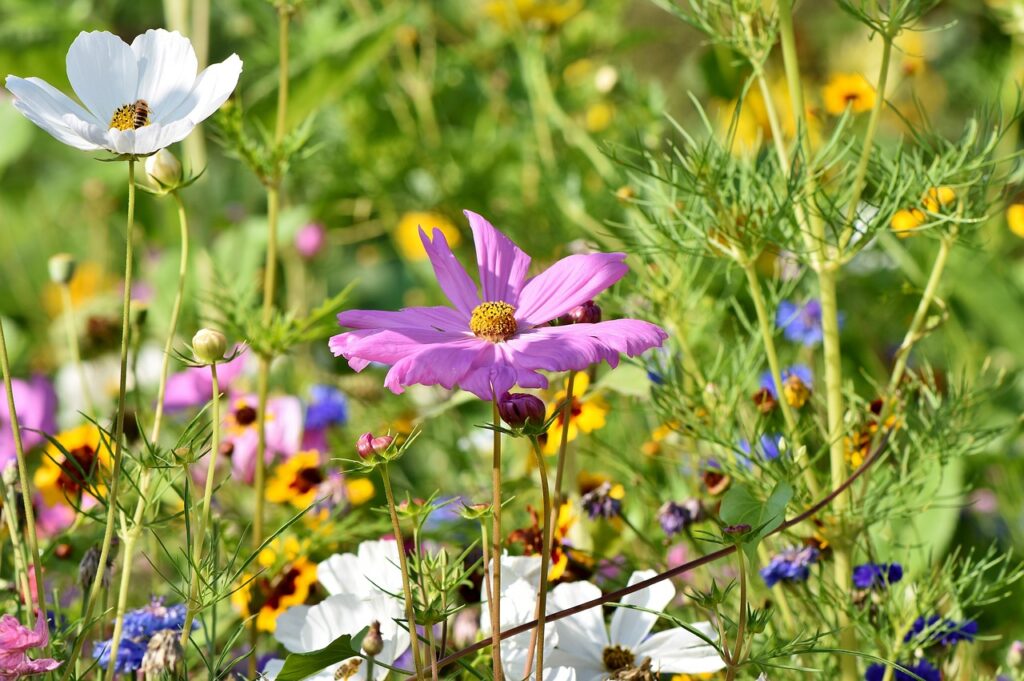Bamboo gardens are gaining popularity among homeowners and gardening enthusiasts for their unique beauty and environmental benefits. On top of being a symbol of good luck, bamboo plants(actually a grass) are known for their rapid growth, flexibility, and strength, which make them an excellent addition to any garden. Bamboo is a special plant that will stimulate the senses and welcome serenity into your garden. Kept under control and in order, bamboo has many uses and should be on any gardener’s plant menu.
As an Amazon and ebay Affiliate we may earn a commission off any purchases made through our links. This won’t affect the price you pay.
There are over 1,000 species of bamboo, but they are broadly categorized into two main types: running and clumping bamboo. Running bamboo is more invasive and spreads widely, while clumping bamboo grows in compact clusters and is easier to control.
Bamboo plants’ characteristics vary depending on the species. Here are some of the most popular bamboo types and their unique features:
Types
Moso Bamboo
Moso bamboo, or Phyllostachys edulis, is one of the most commonly used bamboos in the world. It is native to China and can grow up to 75 feet tall with a diameter of up to 6 inches. Moso bamboo has straight, thick-walled culms that are strong enough to be used as construction material. It is also a popular choice for flooring, furniture, and kitchenware.
Golden Bamboo
Golden bamboo, or Phyllostachys aurea, is a medium-sized bamboo that grows up to 25 feet tall. It has yellow-green culms that are thin-walled and flexible. Golden bamboo is primarily used for decoration and is a popular choice for ornamental gardens, fences, and screens. Its canes are also used in crafts, furniture, and as plant stakes.
Black Bamboo
As the name suggests, black bamboo, or Phyllostachys nigra, has black culms that turn green when exposed to the sun. It is a medium to a large-sized bamboo and can grow up to 40 feet tall. Black bamboo is primarily used for decoration and is a popular choice for bamboo gardens, screens, and fences.
Giant Bamboo
Giant bamboo, or Dendrocalamus giganteus, is the largest bamboo species and can grow up to 100 feet tall with a diameter of up to 14 inches. It is native to Southeast Asia and is appreciated for its rapid growth, strength, and flexibility. Giant bamboo is commonly used as a building material, furniture, and musical instruments.
Hedge Bamboo
Hedge bamboo, or Bambusa multiplex, is a clumping bamboo that is commonly used as a hedge or border plant. It has thin culms that grow up to 15 feet tall, making it an excellent choice for creating a natural privacy screen. Hedge bamboo is also a popular choice for container gardening and bonsai.
Buddha Belly Bamboo
Buddha belly bamboo, or Bambusa ventricosa, is a clumping bamboo that has swollen internodes that resemble a Buddha’s belly. It has thin culms that grow up to 25 feet tall and is primarily used for decoration. Buddha belly bamboo is a popular choice for bonsai, container gardening, and landscape design.
Timor Black Bamboo
Timor black bamboo, or Gigantochloa atroviolacea, is a clumping bamboo that grows up to 50 feet tall with a diameter of up to 4 inches. It has thick, dark culms that are used for construction, furniture, and handicrafts. Timor black bamboo is also used for erosion control and as a natural windbreak.
Control
Now that you know the various types of bamboo and their characteristics, the next step is to learn how to control bamboo‘s growth in your garden.
Bamboo is a fast-growing plant that can quickly spread and invade other areas. It is therefore crucial to understand how to control bamboo to prevent it from becoming an invasive species.
One way to control bamboo is by creating a physical barrier. A bamboo barrier is a thick plastic or metal barrier that is placed around the perimeter of the bamboo planting area. This barrier should be buried at least 2 to 3 feet deep to prevent the roots from spreading beyond the desired area. The barrier should also be tall enough to prevent the rhizomes from growing over the top. The barrier should also be checked regularly to ensure it is still in place and has not been damaged.
Regular pruning is another way to control bamboo growth. Pruning involves cutting the bamboo canes at ground level or just above a node. This helps to control the height and spread of the bamboo while also ensuring the plant’s health. Pruning should be done in the spring or summer when new growth is starting.
Another method of controlling bamboo is by digging it up. This is ideal for smaller bamboo plants or when dealing with isolated clumps. Digging up the plant’s roots and rhizomes ensures that no part of the plant is left behind to regrow. This method, however, can be challenging and time-consuming, especially for larger bamboo plants.
Controlling bamboo requires persistence and patience. It may take several attempts before you can fully control the plant’s growth. It is also important to avoid planting invasive bamboo species, such as running bamboo, which are difficult to control and can easily become a nuisance.
Uses for excess bamboo
As the fastest-growing woody plant in the world, bamboo is an excellent and sustainable resource for home improvement and crafts.
Fencing and Screening
Bamboo is ideal for creating fences or screens because of its unique height and privacy. You can simply cut the bamboo plants and use them as rods or stakes to form a fence. If you want to make a larger barrier, instead of cutting them, let the bamboo grow and use their thick wall as a natural fence. They also add a tropical and exotic feel to your garden.
To make a screen or partition, start by measuring the area, and then cut the bamboo into lengths slightly longer than your desired size. Arrange the bamboo sticks together in a pattern to create a screen. Then, bind them using jute twine or reed fencing wire to create a single, cohesive unit. Finally, anchor the screen into place using metal stakes, anchors, or heavy stones.
Bamboo Garden Furniture
Bamboo is also an excellent material for making garden furniture. From tables and chairs to benches and swings, bamboo furniture is lightweight, durable, and easy to make. You can simply cut the bamboo plant into small sections and drill holes to thread in the rope. Add a seat to a swing, and you’ve got a comfortable spot you can enjoy in your garden.
For solid bamboo furniture, start by measuring and cutting the bamboo poles to the appropriate length. Sand them and smooth out uneven areas, and then coat them with an outdoor sealant or varnish to protect them from weathering. Construct your pieces using reinforcing PVC pipes and connectors. You can also cover the seats or backrests with bamboo slats or rope to create comfortable, natural seating.
Plant Stands and Pot Holders
Bamboo can also be used to create unique plant stands and pot holders. These pieces help decorate and organize your garden or yard.
To make a plant stand, you will need to measure the size and shape of the pot that you want to use. Then, you can cut bamboo sticks to the right length and bind them together. You can create various shapes, and for added stability, you can use wooden discs or pieces to fix the bamboo sticks in place.
To make a pot holder, cut a section of bamboo and drill holes to thread in a rope. You can use jute twine, coconut fiber, or natural rope and tie it to hang in a suitable place in your garden or patio. You can also paint the pot holder or wrap it with twine for a trendy, natural-looking holder.
Bamboo Shade Screens
Bamboo is also an excellent material for a DIY shade screen. It can effectively block sunlight and create cool, comfortable spots in your garden to relax, read, or share with friends.
To make a bamboo shade screen, start by measuring the area you want to cover. Cut the bamboo to similar lengths and bind them tightly together. Make sure to mark the location of the ropes attaching the bamboo together. Then, install the ropes onto your post or structure and attach the bamboo screen to the ropes.
Bamboo Water Fountains
Bamboo water fountains add a soothing and calming effect to your garden. Using bamboo, you can create an organic and rustic look that’s perfect for any home’s garden.
To create a bamboo water fountain, drill holes into the bamboo at different heights and angles to allow the water to flow and trickle. You can use a submersible pump to create a water feature, and bamboo poles to reinforce the structure to support the weight of the water and prevent it from falling over.
Bamboo Birdhouses and Feeders
Bamboo birdhouses and feeders add style and practicality to any garden. With bamboo, you can create a modern and eco-friendly birdhouse that is highly functional and durable.
To create a birdhouse, start by cutting and measuring the bamboo poles to your desired size and length. Then, drill a small hole at the top to make way for the string to hang the birdhouse. You can use bamboo slats or a flat piece to cover the base making it comfortable for birds nesting.
To make bird feeders, close the bottom of a bamboo section. Cut out a rectangular opening at one end, a small circular hole for bird seeds, and a large circular hole for the birds to land. You can attach this bird feeder to a fence or tree for a stylish, eco-friendly bird food station.
To sum up, creating a bamboo garden can be an excellent addition to any garden, with the various types of bamboo available, providing a unique look and feel with their distinct characteristics. Bamboo is an easy plant to maintain, making it more appealing for people who don’t have extensive gardening experience. By controlling bamboo’s growth, you can keep your garden’s aesthetic appeal intact and enjoy the plant’s various benefits without any worries.
With these tips, you are ready to start your bamboo garden journey and make your garden a unique sanctuary of elegance and serenity.
As an Amazon and ebay Affiliate we may earn a commission off any purchases made through our links. This won’t affect the price you pay.



